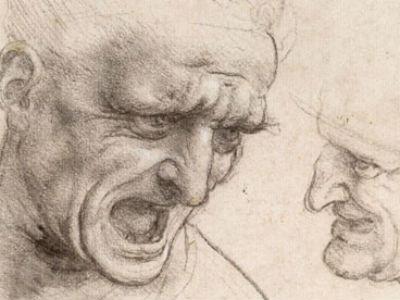Several years ago I had to take my sick son to the doctor. The GP was close to retirement, and I was struck by his physical stiffness and hunched back. We started chatting and – I can’t remember how it came about – he said to me, ‘It makes me laugh how you arts people call yourselves “Doctor”. We have to study for years and years to call ourselves that’.
I studied for ten years for my Doctorate of Philosophy – a thesis about the culture of money. A post-graduate Doctor of Medicine (MD) can be awarded after four years’ full-time study. And the styles of learning are markedly different.
But this distinction was not always so. In ancient times, there was little concept of things as ‘art’. Creations were functional, as well as aesthetic and they communicated messages. For example, the Egyptians would not have conceived of the pyramids, death masks or hieroglyphics as ‘art’. Later too, in the medieval West, a doctor of philosophy specialised in advanced learning in four areas: arts, religion, medicine and law. Leonardo da Vinci did not just think of himself as an artist, or an inventor, or an anatomist. He was a rounded human enquirer, a creative thinker. Doctors of philosophy were extreme enthusiasts of learning and acquired a breadth of knowledge that enabled them to push the boundaries of thought.
As recently as the 19th century, an artificial split occurred between arts and science. And today learning and communicating in the arts and sciences are frequently diametrically opposed. The sciences (and I am generalising here) are characterised by extreme specialisation and objectivity, specific ideas about progress, textbook learning and extremely poor communication. Knowledge is acquired by repetition, experimentation and counterargument. To me this is not rich enquiry. The arts are exploratory in a wider sense – they explore the insides and outsides, as well as the possibilities of ideas. Artists explore open-endedly, rather than setting out to crush the opposition.
Recently I felt compelled to ‘have my say’ on the government’s National Cultural Policy. I wrote, ‘in my view, all higher education courses – regardless of the discipline should include a creative component…Currently many who graduate from programmes that are not arts specific lack communication and creative skills which can be brought to bear in whatever occupation they enter. Every single human being needs to develop the skills to be able to think and communicate creatively and effectively.’
Science would certainly benefit from some creative thinking – in order to communicate findings but more importantly to inform investigation and to recognise that the world is filled with interconnections. Scientists should be culturally and philosophically aware so the artificial rupture that is maintained by monetary interests can be stitched back up.
Communication from the scientific sector is frequently delivered in incomprehensible language, with little acknowledgement of the fact that communication and ideas are critical to the continuation of culture. This is because what is being said is more important than how it is said.
Ironically perhaps, in Australia, there is a body called Australian Science Communicators. The aim of these specialists is to communicate ‘the complexities, relevancy and potential implications of new scientific knowledge’. But the question is more fundamental than that – from where did those knowledges derive? What initiates and inspires scientific enquiry and why is it so distanced from the arts and humanities?
Art should never have been divorced from science; it should be its partner. But money, power and economics forbid their fruitful marriage. Economics is also regarded as a science by the majority of its practitioners (and I would strongly refute this). Money and economic thinking has in turn led, in parts of our culture, to a devaluing of art and a celebration of the veracity of science over art. We all know where the big bucks go – and that is not into the arts sector.
The split between the arts and science continues to exist thanks to monetary interests. However, if we were to educate all new students going through the system in a more holistic (Leonardo) way – they would be encouraged to use all parts of their brains to identify connections and contribute, and communicate, more to the human knowledge base. Then we could all approach the future from a more integrative perspective. We should be able to understand how others’ view the world and to explore ideas creatively. To me, this is the definition of intelligence – putting ourselves in someone else’s shoes and adopting alternative perspectives. This would have huge positive ramifications in terms of solving crises as well as how we view those working in the arts.
The GP who saw my sick son would have been a lot less mentally and physically inflexible if he had recognised my arts knowledge and understood how it could interact in exciting ways with science.





